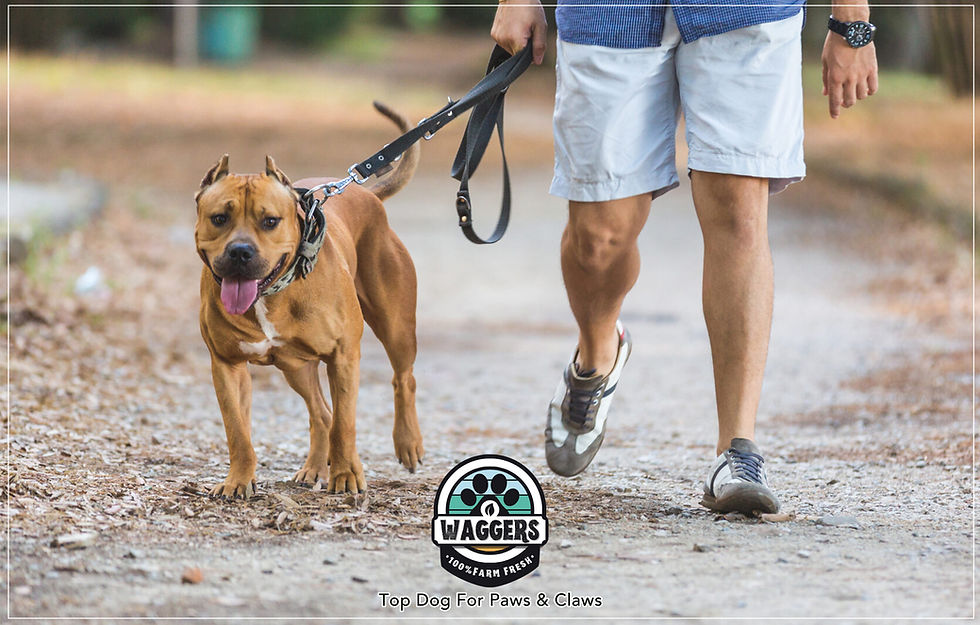Walking your dog isn't just about providing exercise; it's an essential aspect of their physical health, mental well-being, and overall happiness. However, determining how often to walk your furry friend can be a nuanced decision, influenced by various factors such as breed, age, health status, and individual needs. In this comprehensive guide, we'll explore the considerations involved in determining the ideal frequency for walking your dog, ensuring they receive the right amount of exercise and stimulation.

Understanding Your Dog's Exercise Needs
Before establishing a walking schedule, it's crucial to understand your dog's exercise requirements. Different breeds have varying energy levels and exercise needs, with high-energy breeds like Border Collies and Siberian Huskies requiring more physical activity than sedentary breeds like Bulldogs or Pugs. Additionally, factors such as age, size, and overall health contribute to your dog's exercise capacity. Puppies and young dogs typically have higher energy levels and may need more frequent walks, while senior dogs may require shorter, gentler outings.
Tailoring the Walk to Your Dog's Breed
Each dog breed has unique characteristics and traits that influence their exercise preferences and requirements. For instance, working breeds such as Retrievers and Shepherds thrive on vigorous physical activity and mental stimulation, benefiting from longer and more frequent walks. Conversely, brachycephalic breeds like Bulldogs and Pugs have respiratory limitations and may need shorter, leisurely walks to prevent overheating and breathing difficulties. Understanding your dog's breed-specific needs is essential in designing an appropriate walking regimen.
Considerations for Age and Health
Age and health status play significant roles in determining how often you should walk your dog. Puppies have growing bodies and boundless energy, necessitating multiple short walks throughout the day to prevent boredom and excess energy. As dogs mature, their exercise requirements may change, with adult dogs typically requiring one or two longer walks daily. Senior dogs may have mobility issues or chronic health conditions that require gentler exercise, necessitating shorter, more leisurely strolls. Consulting with your veterinarian can help tailor a walking schedule to accommodate your dog's age and health needs.
Assessing Your Dog's Individual Preferences
Beyond breed and age considerations, it's essential to pay attention to your dog's individual preferences and behavior cues. Some dogs may exhibit signs of restlessness or anxiety when deprived of regular exercise, indicating a need for more frequent walks. Conversely, dogs with lower activity levels or health issues may be content with shorter, less frequent outings. Observing your dog's behavior and adjusting their walking schedule accordingly ensures that their exercise needs are met while respecting their individual preferences and limitations.
Establishing a Balanced Walking Routine
Creating a balanced walking routine involves striking a harmonious blend of frequency, duration, and intensity tailored to your dog's specific requirements. As a general guideline, most adult dogs benefit from at least one brisk walk lasting 30 minutes to an hour each day, supplemented by shorter potty breaks and mental stimulation activities. However, this recommendation may vary depending on factors such as breed, age, health status, and individual preferences. It's essential to prioritize consistency and regularity in your dog's walking routine, providing them with predictable opportunities for exercise and enrichment.
Factors Influencing Walking Frequency
Several factors may influence the frequency of walks required for your dog. Lifestyle factors such as living in an apartment versus a house with a yard, access to off-leash areas, and the presence of other pets can impact your dog's daily exercise routine. Additionally, environmental factors such as weather conditions, seasonal changes, and urban or rural surroundings may influence your walking schedule. Flexibility and adaptability are key in accommodating these variables while ensuring your dog's exercise needs are adequately met.
Signs of Overexertion or Understimulation
While regular exercise is vital for your dog's health and well-being, it's essential to monitor for signs of overexertion or understimulation. Excessive panting, reluctance to walk, limping, or signs of fatigue may indicate that your dog is overexerted and needs rest. Conversely, behaviors such as destructive chewing, excessive barking, or hyperactivity may suggest that your dog is under-stimulated and in need of additional exercise or mental enrichment. Paying attention to these cues allows you to adjust your dog's walking schedule accordingly, ensuring they remain happy, healthy, and balanced.
Consulting with Your Veterinarian
When determining the ideal frequency for walking your dog, it's always advisable to consult with your veterinarian. Your vet can provide personalized recommendations based on your dog's breed, age, health status, and individual needs. They can also offer guidance on managing specific health conditions, adapting exercise routines to accommodate mobility issues or chronic illnesses, and ensuring your dog's overall well-being. By partnering with your veterinarian, you can develop a tailored walking regimen that promotes your dog's physical health, mental stimulation, and overall happiness.
Walking your dog is a fundamental aspect of responsible pet ownership, providing essential exercise, mental stimulation, and bonding opportunities. By considering factors such as breed, age, health status, individual preferences, and environmental variables, you can determine the ideal frequency for walking your furry companion.
Establishing a balanced walking routine that prioritizes consistency, regularity, and adaptability ensures that your dog receives the right amount of exercise and enrichment to thrive.

Comentarios